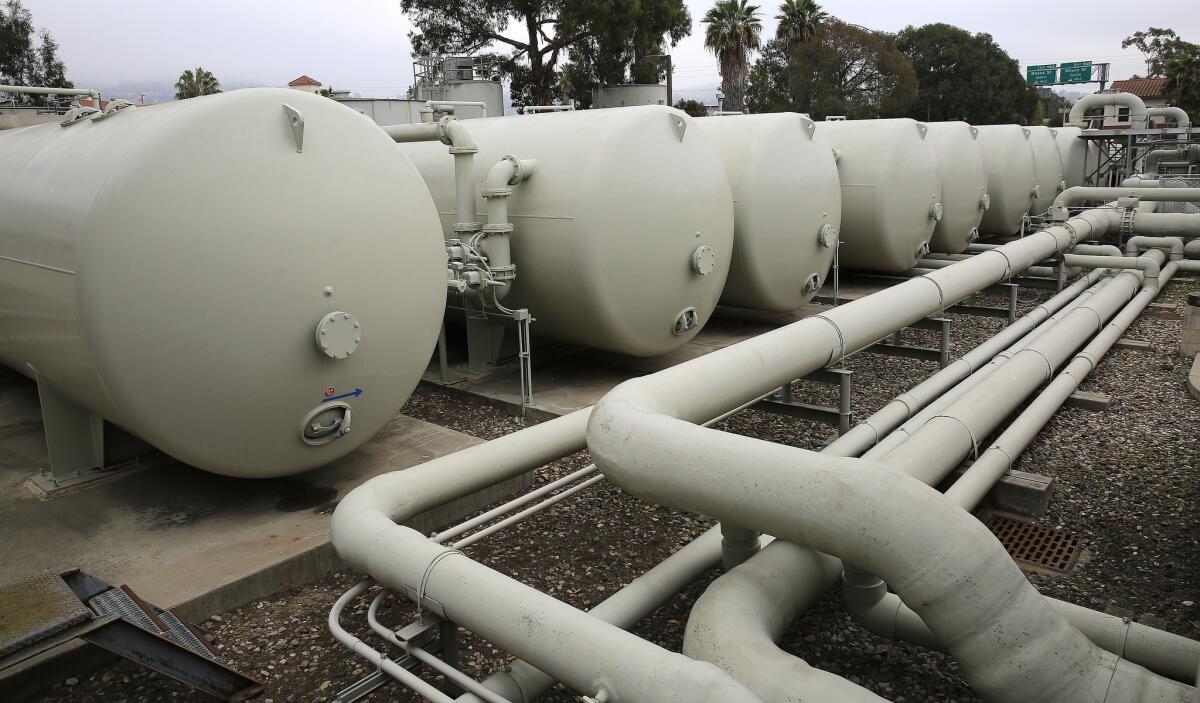Santa Barbara to spend $55 million on desalination plant as drought âlast resortâ

Filtration tanks at Santa Barbaraâs Charles E. Meyer Desalination Plant on Feb. 18.
Santa Barbara City Council members on Tuesday unanimously approved spending $55 million to reactivate a mothballed desalination plant that could provide the city with nearly a third of its drinking water.
The Charles E. Meyer Desalination Facility was built during a drought in the 1990s but closed in 1992 when desperation for water subsided. The plant was never utilized beyond a testing period, but the city maintained it in the event that a severe water shortage might once again threaten the city.
âDesalination has been a last resort,â Mayor Helene Schneider told The Times Tuesday night after the vote. âThe way the drought has continued these last four years, we are really getting at that last resort.â
SIGN UP for the free Essential California daily newsletter >>
The process of reopening the plant began last September, when Lake Cachuma, the cityâs main reservoir, dipped below 30% capacity. The City Council that month voted to jump-start efforts to bring the desalination plant back online.
The contract approved Tuesday includes about $46.6 million for design and construction. Additional costs come from legal and consulting fees during the permitting process. The plant is expected to be operating by fall 2016.
âWe recognize itâs a big decision to make,â Schneider said. âWe also recognize that desalination is not just for this particular drought -- they are cyclical.â
The city has been recognized for its water conservation efforts, with per capita water use falling several gallons below other Southern California cities.
For breaking news in California, follow @MattHjourno
Staff writer Amanda Covarrubias contributed to this report.
ALSO
Hayward police officer reportedly killed in shooting after traffic stop
28-year-old San Pedro teacher accused of sexually abusing her student
Uh-oh, NoHo road closures coming today with Vice President Joe Biden visit
More to Read
Sign up for Essential California
The most important California stories and recommendations in your inbox every morning.
You may occasionally receive promotional content from the Los Angeles Times.











